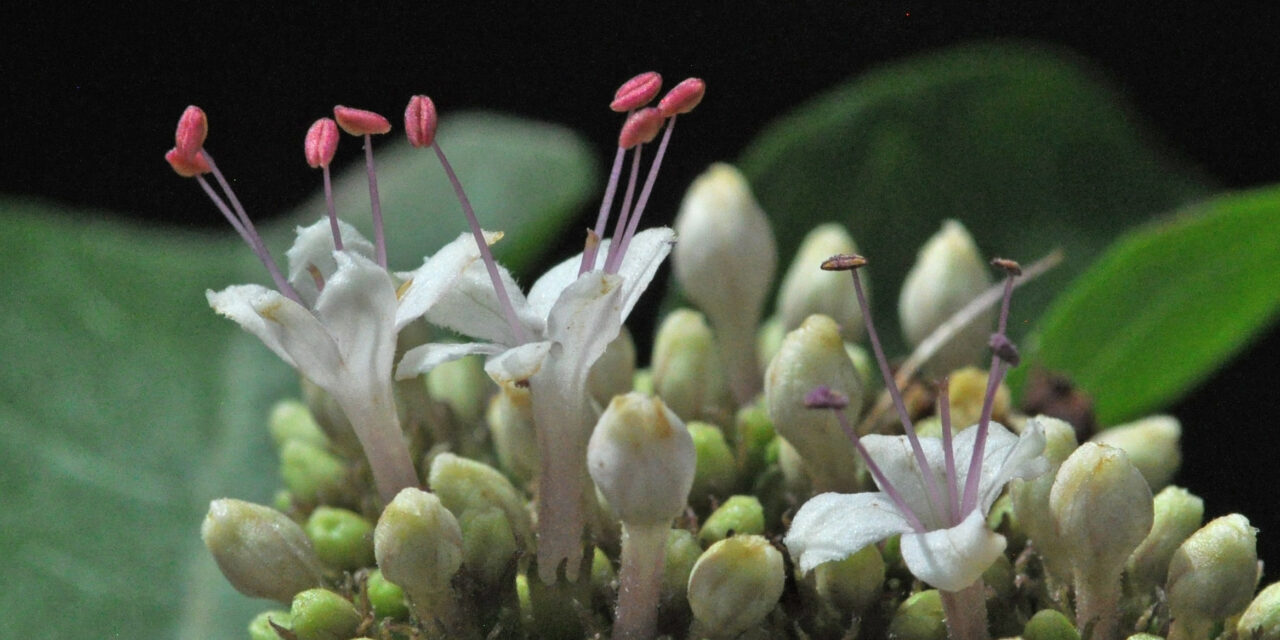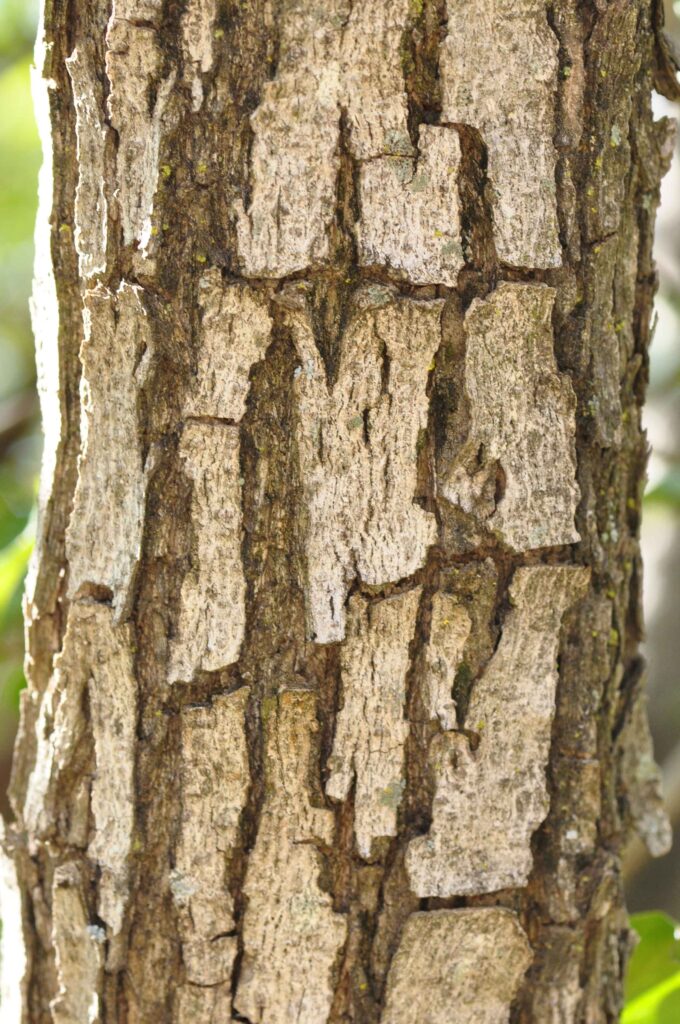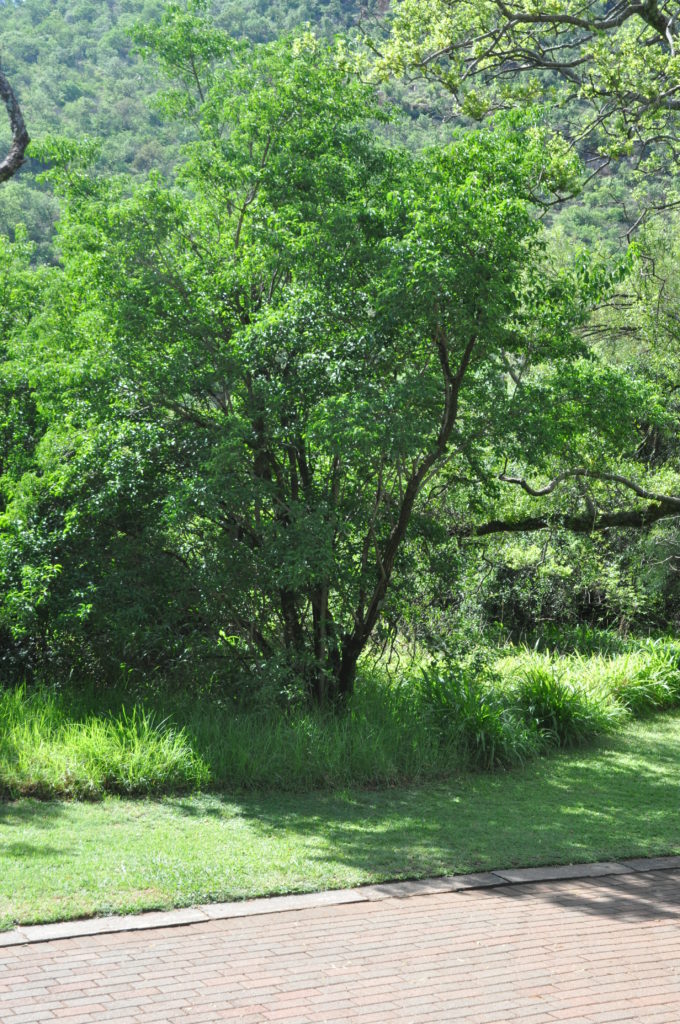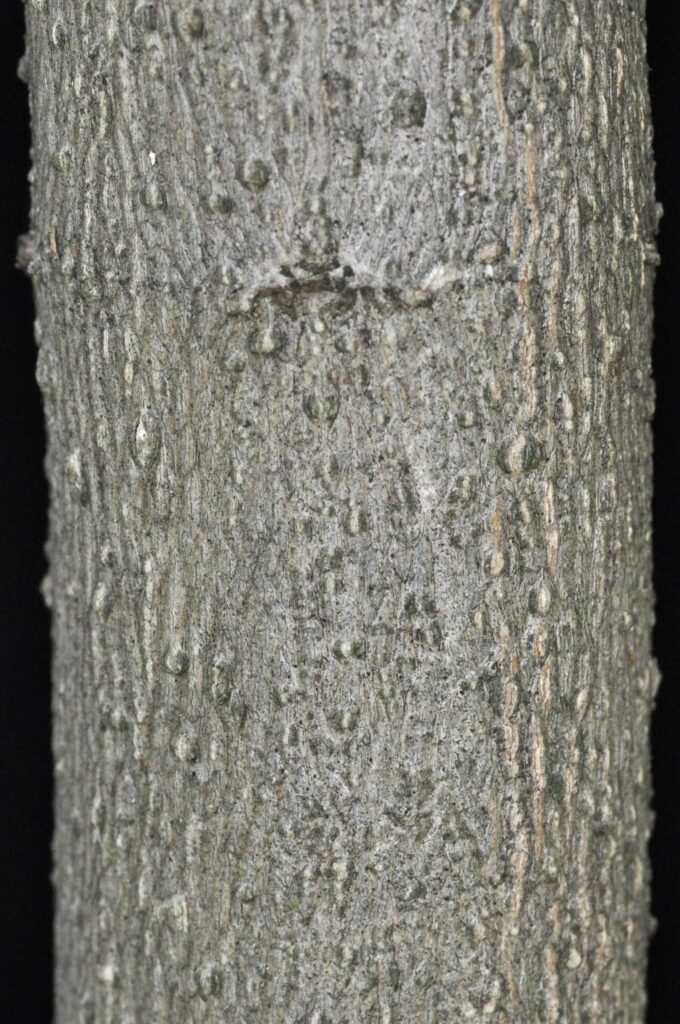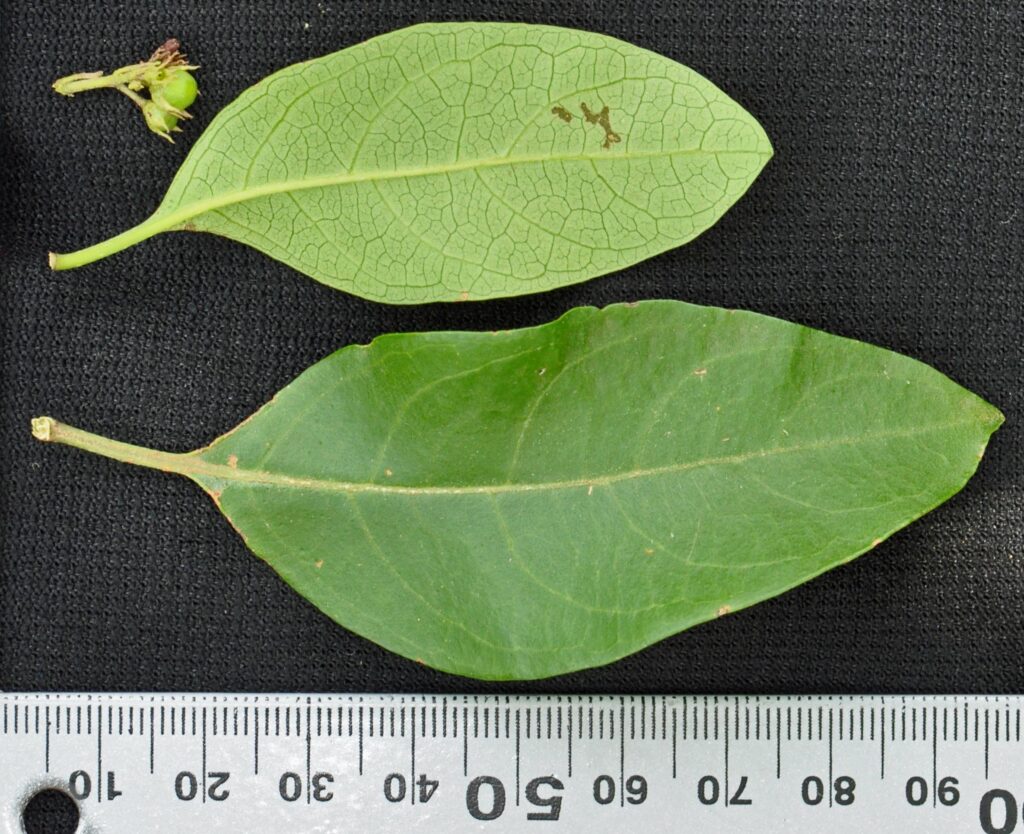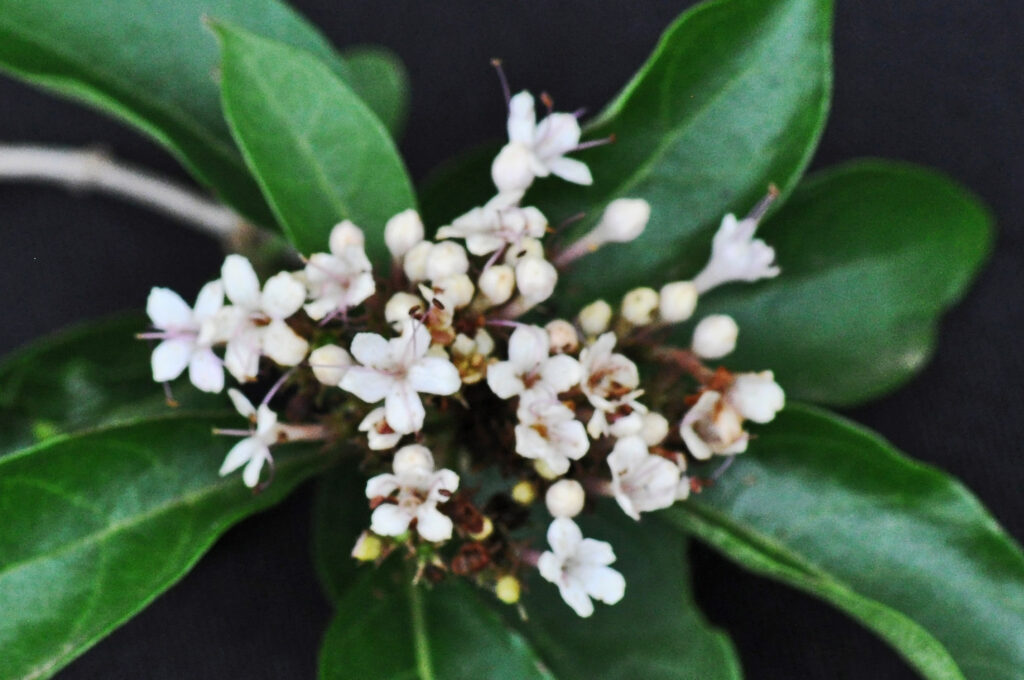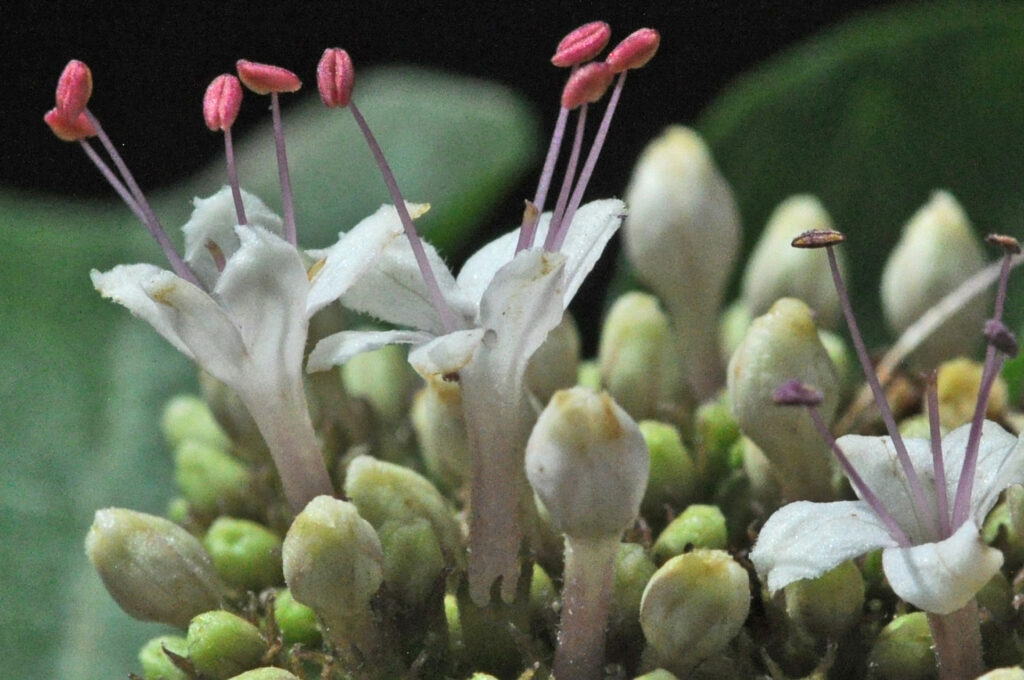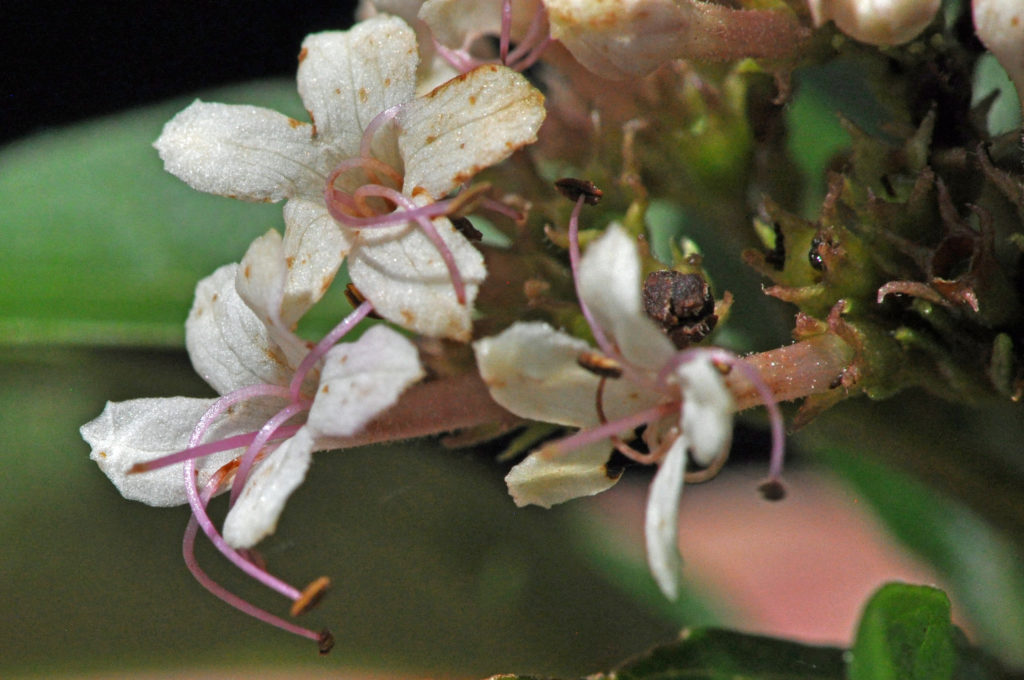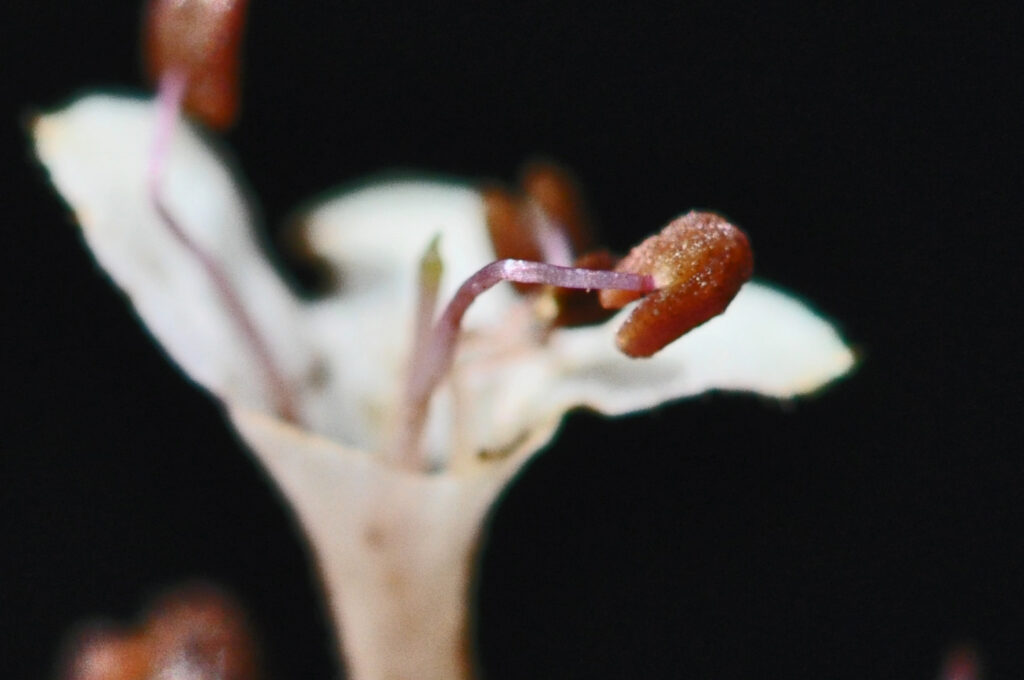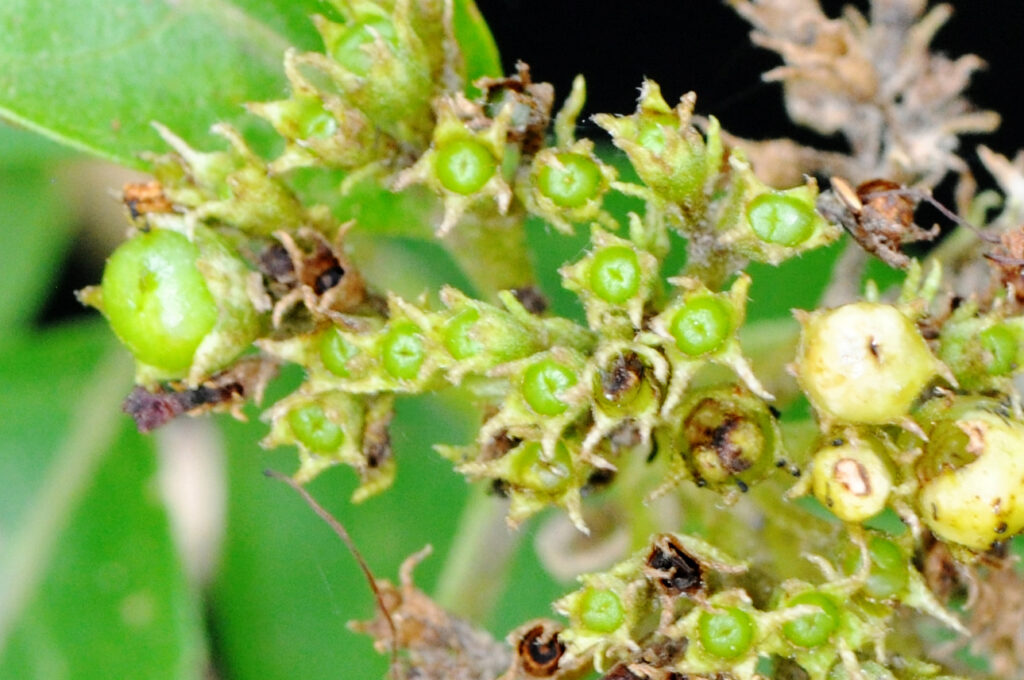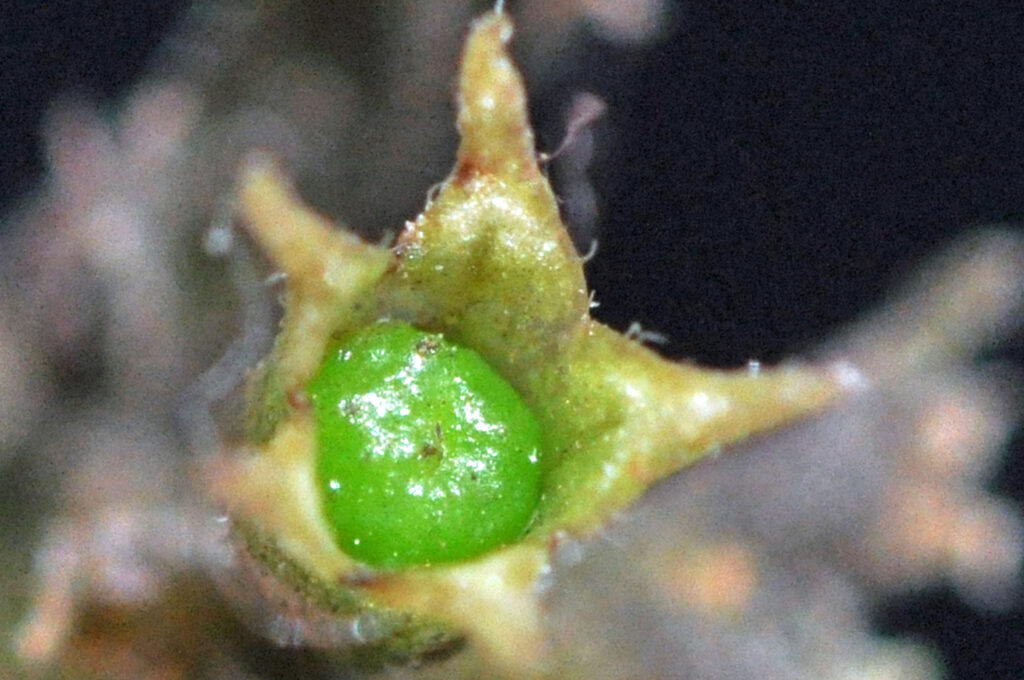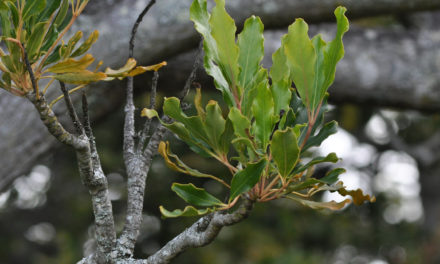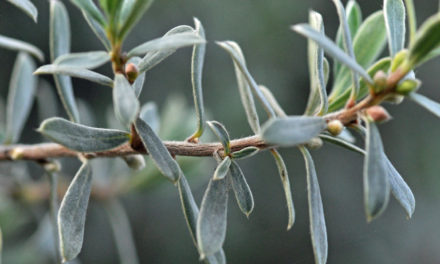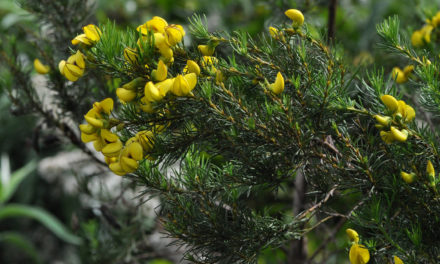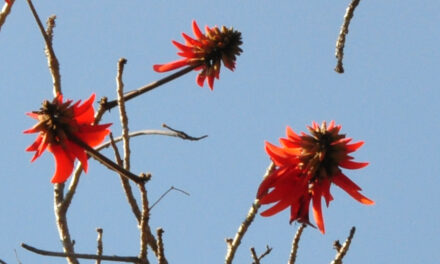Volkameria glabra
General Info – summary
This Tree may be multi-stemmed and reach 12m high with a trunk up to 30cm wide, or remains a shrub. Simple almost hairless Leaves are broadest in the middle, lack stipules and crushed leaves may smell. The white, congested, bisexual, and almost regular Flowers are in racemes with didynamous stamens, and a superior ovary with a single linear protruding style. Fruit is a small, fleshy drupe with a persistent calyx.
Description
Previous Names: Amerina tripphylla, Clerodendrum glabrum – until 2010, Clerodendrum ovale, Clerodendrum rehmannii, Ehretia triphylla.
SA Tree No. 667.
Common names: (Afr) Bitterblaar, Stinkboom, Tontelhout, Truitjie-roer-my-nie. (Eng) Cat’s Whiskers, Smooth Tinderwood, Tinderwood, Verbena tree, Weeping Tree, White Cat’s Whiskers. (isiXhosa) Uluvethe, Umqwaqu, Umqwaqwanam, Uqangazane, Uqangazani. (isiZulu) Ifamu, Umnukalembiba, Umqaqonga, Umqaqongo, Uphehlecwathi. (Northern Sotho) Mohlokohloko, Motlhokutlhoku. (siSwati) Umphehlavatsi, Umphehlacwatsi. (Tshivenda) Munukha-tshilongwe. (Xitsonga) Xinhun’welambeva.
Family: Lamiaceae (Mint or sage family) has 236 genera and 7 000+ species are widely distributed. Members if this family may have saw-toothed Leaves and may have 4-angled stems. Some species are woody. The opposite or whorled leaves are usually simple or digitate. Many are gland-dotted and all lack stipules. Many are aromatic: including lavender and rosemary. Flowers are often Zygomorphic (the corolla is divisible into 2 equal halves in one plane only). There is a superior, 4-locular Ovary. Fruit has up to four 1-seeded nutlets or it is a drupe. Local genera on this website include Tinnea, Vitex and Volkameria.
Name derivation: Volkameria – named after Johann Christoph Volkamer (1644-1720). Botany was his hobby. He was a merchant and manufacturer. The tree may have been named after his son. glabrum – somewhat hairless.
Conservation: National Status: L.C. (Least Concern). Assessed: 2005 (W. Foden and L. Potter).
Tree
This short, densely crowned Tree may reach 10m and occasionally 12m high. It is often multi-stemmed. The Trunk is up to 30cm wide and may branch some distance off the ground. Branchlets are hairless. The initially smooth grey-brown Bark becomes much darker and roughly fissured (photo 180) or flaking with age (photo 459). The slender, usually initially hairy young branches are slightly upright (photo 139) and roughly quadrangular. Present here are leaf scars and raised visible light coloured lenticels (usually raised corky oval or elongated areas on the plant that allows the uncontrolled interchange of gases with the environment).
- 180. 2016/01/19. Walter Sisulu NBG. Photo: David Becking.
- 459. 2016/08/02. Walter Sisulu NBG. Photo: David Becking.
- 139. 2016/12/13. Walter Sisulu NBG. Photo: David Becking.
- 195. 2016/01/19. Walter Sisulu NBG. Photo: David Becking.
Leaves
This semi-deciduous tree has usually thin Leaves that are soft and simple (have a single blade, which may have incisions that are not deep enough to divide the leaf into leaflets – photo 199). They are usually in whorls of 3 (or occasionally 5) or are opposite and occur around a node. The usually smooth leaves are variable: elliptic, elliptic-ovate or lanceolate and up to 10 x 7cm – often much smaller. Occasionally veins on the lower surface are hairy – otherwise leaves are hairless. Either leaves protrude horizontally, or they are drooping. The Blade is broadest just above the middle of the leaf and is dark green above. It is paler green on the lower side, with minute sunken gland dots and a prominent, protruding Midrib (photo 199). In this photo, the net veins are clearly visible below as are the 5-7 pairs of lateral veins. Veins arch and run almost parallel but do not meet the margin (photo 199). The Apex tapers to a point (photo 199) and may occasionally be attenuate (showing a long gradual taper). The Base is tapering to rounded and partially decurrent (leaf blades that partly wrap or have wings around the up to 2cm long Petiole-leaf stalk – photo 199). The Margin is slightly rolled under and entire (with a continuous margin, not in any way indented). The erect petiole is thin, hairy, up to 2,5cm long and furrowed on the upper surface (photo 199). The leaf may fold up along the midrib. Crushed leaves may have a distinct pungent odour. (The Venda name “Munuka-tshilongwe” means “smells of cattle dung”) applies to this. Stipules (basal appendages of the petiole) are absent.
- 199. 2016/01/19. Walter Sisulu NBG. Photo: David Becking.
Flowers
The small Flowers develop at the ends of branches and are impressive when large numbers develop (photo 520). Each flower is up to 1cm in diameter and more or less actinomorphic (Regular, symmetrical. Flowers are vertically divisible into similar halves by more than 1 plane passing through the axis). The flowers are in dense Racemes (simple, indeterminate inflorescences with stalked flowers) that are up to 14cm in diameter. They are whitish and develop in rounded terminal heads in leaf axils. Each bisexual flower has a short, 5-lobed hairy and cup-like Calyx (photo 753). The Corolla tube is up to 1cm long, widens near the throat to close on 1cm wide and ends in 5 spreading lobes (photo 520). These hairy white or pale pink lobes are up to 4 x 3mm, with mauve or lilac tinged margins. These lobes bend backwards as they age (photo 529). The 4 long, protruding Stamens are didynamous (having 4 stamens disposed in 2 pairs of 2 different lengths (photo 753). This arrangement usually occurs in Scrophulariaceae, Labiatae and Stilbaceae families. Stamens, with their long, linear initially bluish Filaments (photo 753), arise on the upper part of the corolla tube. In this photo the impressive initially deep red Anthers have slightly diverged Theca (pollen sacs – photos 753 & 525). They are nearly centrally attached to the filaments. The single Pistil (a unit of the Gynoecium, the female element of the flower, composed of the Ovary, Style and Stigma) has a superior, imperfectly 4-locular Ovary. The single linear Style (photo 529) also protrudes beyond the petals and may curve downwards. The upper leaves may almost enclose the flowers. Flowers either are sweetly or are unpleasantly scented. (Sep-Apr but may occur most of the year).
- 520. 2018/01/24. Walter Sisulu NBG. Photo: David Becking.
- 753. 2020/01/20. Walter Sisulu NBG. Photo: David Becking.
- 529. 2018/01/24. Walter Sisulu NBG. Photo: David Becking.
- 525. 2018/01/24. Walter Sisulu NBG. Photo: David Becking.
Fruit
The pea sized Fruit is a fleshy Drupe (a fleshy, 1-seeded indehiscent fruit with the seed enclosed in a stony endocarp; stone fruit – like a peach). Many drupes develop in closely packed dense round heads. The almost spherical (photo 186) to slightly lobed fruit is up to 1cm in diameter. Each fruit is composed of 4 nutlets (small nuts which are indehiscent, single seeded, hard and bony) that are enclosed within the drupe. The ribbed Calyx (photo 275) forms a persistent loose cup-like base surrounding the fruit (photos 275 & 705). The remains of the styles are still visible in these photos. At maturity, the fruit is cream to yellow colour and may remain on the tree for months. (Feb-Jul).
- 186. 2016/01/19. Walter Sisulu NBG. Photo: David Becking.
- 275. 2018/01/11. Walter Sisulu NBG. Photo: David Becking.
- 705. 2018/02/06. Walter Sisulu NBG. Photo: David Becking.
Distribution & Ecology
These Trees are located in deciduous woodland, on rocky hillsides, termite mounds, in coastal bush, coastal dunes and forest fringes. They grow well in the bushveld (is a sub-tropical mineral-rich woodland ecoregion of southern Africa) occurring in Limpopo and Northwest provinces in South Africa. They also are found in riverine thickets as well as open sun and light shade areas. On coastal dunes, they are salt spray resistant but may be short and deformed. These plants occur in the foothills of the Drakensberg. Provincially these plants occur in Eastern Cape, KwaZulu-Natal – from the coast to the Drakensberg and usually up to 1 700m. They are also present in Gauteng e.g. north of Pretoria, Mpumalanga, Limpopo, North West and Northern Province. Beyond South Africa, they occur in Eswatini (Swaziland), Botswana, Zimbabwe, Mozambique, north-eastern Namibia, Angola, Kenya, Somalia, Seychelles and Comoros. Birds like white-eyes and the Common or Blackeyed Bulbuls (Pycnonotus barbatus) eat the Fruit. Froghoppers are insects that can jump many times their own height and are the nymphs of spittlebugs (family Aphrophoridae with close to 1 000 different species). It is their nymphs (immature form) that suck the Sap out of this tree and produce a spittle like foam and causing the trees to have a reputation as a rain tree. The butterfly larva of the Natal Bar (Cigaritis natalensis – partially blue winged are common in eastern and northern SA) feed on the leaves as do the larva of the Purple-brown Hairstreak / Common Hairstreak butterfly (Hypolycaena phillippus phillippus) that has conspicuous hind wing tails, and a year-round flight period. Flowers also attract ants and bees.
Ethnobotany
The hard Wood is white to pale brown, close-grained and used for carving, hut and fish trap construction and for small pieces of furniture. The wood may be used as tinderwood (used for starting fires – hence the common name). Wood is used to start fires by friction. Leaves are used as insect repellants and as a disinfectant. Leaves are rubbed on hands and face when collecting honey to keep bees away. Fruit is used to produce a blue-grey dye. In an investigation, the hexane extracted from the plant has shown to have a good antifungal activity against Candida albicans. In the mouth, this yeast is an opportunistic pathogen and can cause thrush. Local medicine makes use of plant parts. Volkameria glabra is fast growing from both seeds and cuttings. New growth can flower after 1 year. This is a popular ornamental shrub and garden tree.
References
Boon, R. 2010. Pooley’s Trees of eastern South Africa. Flora and Fauna Publications Trust, Durban.
Burrows, J.E., Burrows, S.M., Lotter, M.C. & Schmidt, E. 2018. Trees and Shrubs Mozambique. Publishing Print Matters (Pty) Ltd. Noordhoek, Cape Town.
Coates Palgrave, M. 2002. Keith Coates Palgrave Trees of Southern Africa, edn 3. Struik, Cape Town.
Foden, W. & Potter, L. 2005. Volkameria glabra (E.Mey.) Mabb. & Y.W.Yuan. National Assessment: Red List of South African Plants version . Accessed on 2025/04/03.
Lawrence, G. H. M, 1951. Taxonomy of Vascular Plants. The Macmillan Company, New York. Tenth Printing 1965.
Palmer, E. & Pitman, N. 1972. Trees of southern Africa. Balkema, Amsterdam, Cape Town.
Schmidt, S. Lotter, M. & McCleland, W. 2002. Trees and Shrubs of Mpumalanga and the Kruger National Park. Jacana, Johannesburg.
van Wyk, B. & van Wyk, P. 1997 Field guide to Trees of Southern Africa. Struik, Cape Town.
http://www.digplanet.com/wiki/Clerodendrum_glabrum
http://www.calflora.net/southafrica/plantnamesP-Z.html
http://www.zimbabweflora.co.zw/speciesdata/species.php?species_id=149130
http://plantzafrica.com/plantcd/clerodenglab.htm
http://repository.up.ac.za/bitstream/handle/2263/32977/Masevhe%20_Isolation_2013.pdf?sequence=4
https://en.wikipedia.org/wiki/Froghopper
http://posa.sanbi.org/flora/browse.php?src=SP
https://en.wikipedia.org/wiki/Volkameria
https://www.britannica.com/plant/Lamiaceae
https://en.wikipedia.org/wiki/Froghopper
https://en.wikipedia.org/wiki/Johann_Christoph_Volkamer

